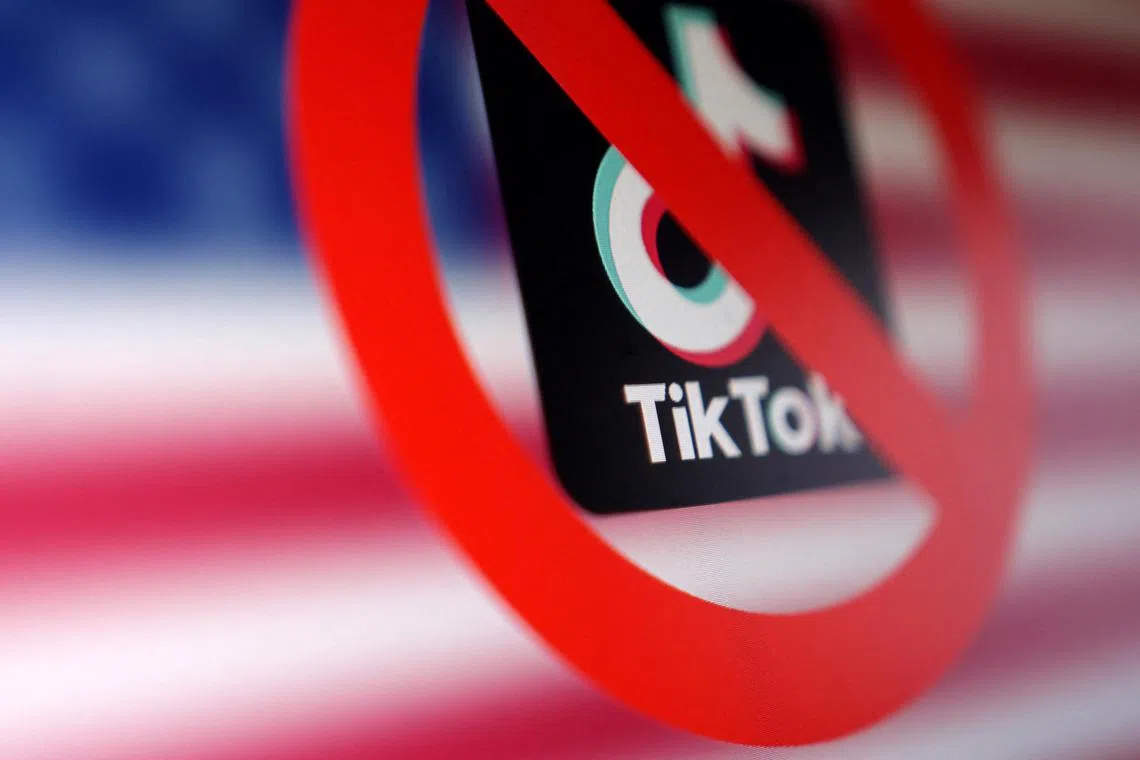TikTok’s on and off ban: Here’s a breakdown of what happened
The TL;DR: TikTok went dark in the United States late on Jan 18, but was back online the next afternoon. Here’s a three-minute digest of what’s happened so far.
Sign up now: Get ST's newsletters delivered to your inbox

TikTok restored its services in the United States by the afternoon of Jan 19, less than a day after it went dark.
PHOTO: REUTERS
Follow topic:
For weeks now, American teens have been turning up in droves
They were preparing themselves for a planned ban of TikTok in the US. Still, many lamented the fate of the app when it really went dark on late Jan 18, along with Lemon8 and Capcut, which are owned by the same company. Yet in a surprising U-turn, TikTok was revived again. Confused? Here’s a quick recap to get up to speed.
What happened in the lead up?
US officials had national security concerns for years regarding TikTok, mainly because of its parent company ByteDance in China, and concerns that the Chinese government could use the app to “spy” on Americans. Some alleged that the app could be used for harassment and espionage.
Then President Donald Trump initiated the ban in 2020 towards the end of his first term, naming concerns that the company was sharing Americans’ personal information with the Chinese government. This carried on through the next administration, when Mr Joe Biden was elected in November 2020.
In February 2023, federal agencies were given 30 days to ensure TikTok was deleted from all government-issued mobile devices,
The TikTok ban-or-sell Bill was passed in March 2024. In April 2024, ByteDance had nine months to sell the app to a US owner. Meanwhile, the Bill allowed for a sitting president to grant an extension if a sale was in progress.
TikTok contested the ban, arguing that it would be a violation of free speech rights for users, and the case was brought in front of the Supreme Court on Jan 10, 2025.
Then came three “on again, off again” days.
Jan 17
In a 9-0 decision among the judges, the US Supreme Court upheld the law that would lead to a ban of TikTok in the country.
The Biden administration emphasised that TikTok could continue operating if sold to an American buyer. On Jan 17, the White House indicated that Mr Biden would not take action to save TikTok.
Jan 18
TikTok went dark in the US late on Jan 18, right before the federal ban took effect on Jan 19. The move affected about 170 million users – nearly half of all Americans.
US TikTok users were logged out and a message that read: “A law banning TikTok has been enacted in the U.S. Unfortunately, that means you can’t use TikTok for now. We are fortunate that President Trump has indicated that he will work with us on a solution to reinstate TikTok once he takes office. Please stay tuned!”
The app also disappeared from Apple and Google app stores ahead of the ban, on Jan 18, along with other apps owned by ByteDance, which shocked users, who didn’t realise other related apps would be affected.
Jan 19
TikTok restored its services in the US by the afternoon of Jan 19, less than a day after it went dark, following Trump’s pledge to bring back the app.
Trump, who was headed back to the White House as the next US president, had posted “SAVE TIKTOK!”
He added in a post for the US to take 50 per cent American ownership.
This was a reversal in stance by Trump, who apparently had a change of mind after garnering support from young voters through TikTok during the US election.
What’s been the impact?
More than 700,000 new users joined the Chinese-owned Xiaohongshu, calling themselves “TikTok refugees”. Before January, Xiaohongshu was largely used by Chinese users, while most of the content was shared in the Chinese language.
Some users commented under the “TikTok refugee” hashtag on Xiaohongshu that they had fled to the app to “hand their personal data directly over to the Chinese government”, to retaliate against the US government.
They said they preferred Xiaohongshu over Instagram and YouTube, because the app is creator-friendly and has a stronger sense of community.
Xiaohongshu’s Chinese users have embraced the newcomers. In the past week, “TikTok refugees” have swopped information about their lifestyles and culture, as well as memes, with Chinese users. Chinese users have helped Americans with maths homework, while American users helped Chinese users with English homework.
Another surprising development was a sudden uptick in American interest in learning Mandarin. Popular language-learning app Duolingo said that there was a 216 per cent increase in the number of Americans learning Mandarin on its platform compared with the same time in the previous year.

